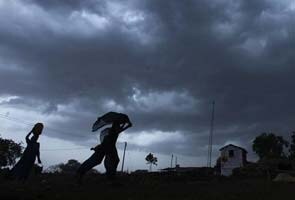
New Delhi:
India's monsoon rains were 6 per cent above average in the past week, the weather office said on Thursday, the first time they have been heavier than average in the current rainy season that began in June, in what is turning out to be a drought year.
The crucial monsoon rains, vital for the 55 per cent of Indian farmland without irrigation, are 12 per cent short of average so far and threaten cereal and pulses production as drought continues in some areas of west and south India.
In the previous week, rainfall was 2 per cent below average, which is still within a normal range, as the monsoon revived in rice, cane and soybean growing areas of the world's leading food consumer and producer.
Rains below 90 per cent of long-term averages in the entire season are considered "deficient," or a drought in layman's terms.
India, whose huge land mass contains nearly all climates and soil types, last faced widespread drought in 2009 when the June-to-September monsoon rains were 22 per cent below average and it had to import sugar, pushing global prices to 30-year highs.
The crucial monsoon rains, vital for the 55 per cent of Indian farmland without irrigation, are 12 per cent short of average so far and threaten cereal and pulses production as drought continues in some areas of west and south India.
In the previous week, rainfall was 2 per cent below average, which is still within a normal range, as the monsoon revived in rice, cane and soybean growing areas of the world's leading food consumer and producer.
Rains below 90 per cent of long-term averages in the entire season are considered "deficient," or a drought in layman's terms.
India, whose huge land mass contains nearly all climates and soil types, last faced widespread drought in 2009 when the June-to-September monsoon rains were 22 per cent below average and it had to import sugar, pushing global prices to 30-year highs.
Track Latest News Live on NDTV.com and get news updates from India and around the world

